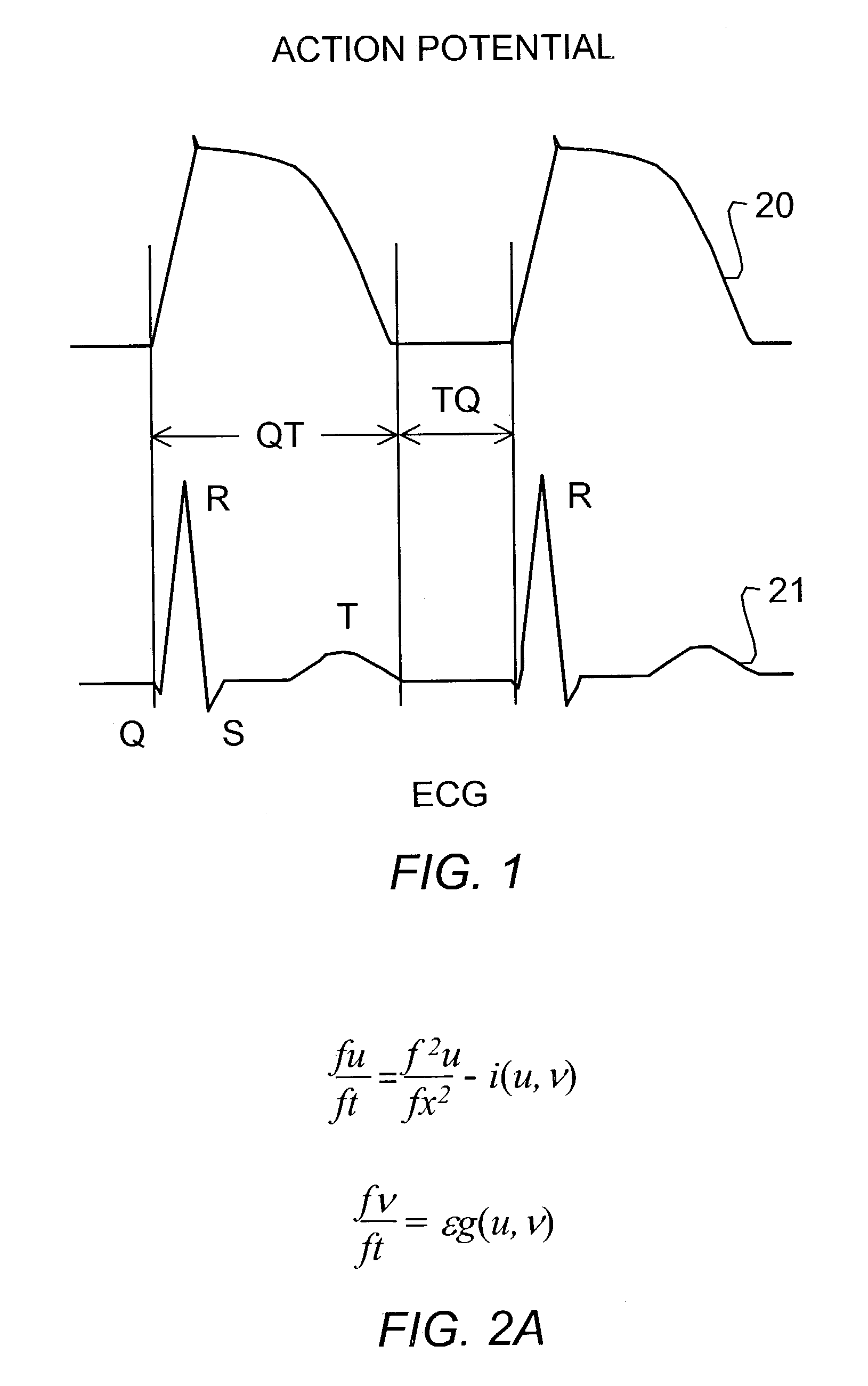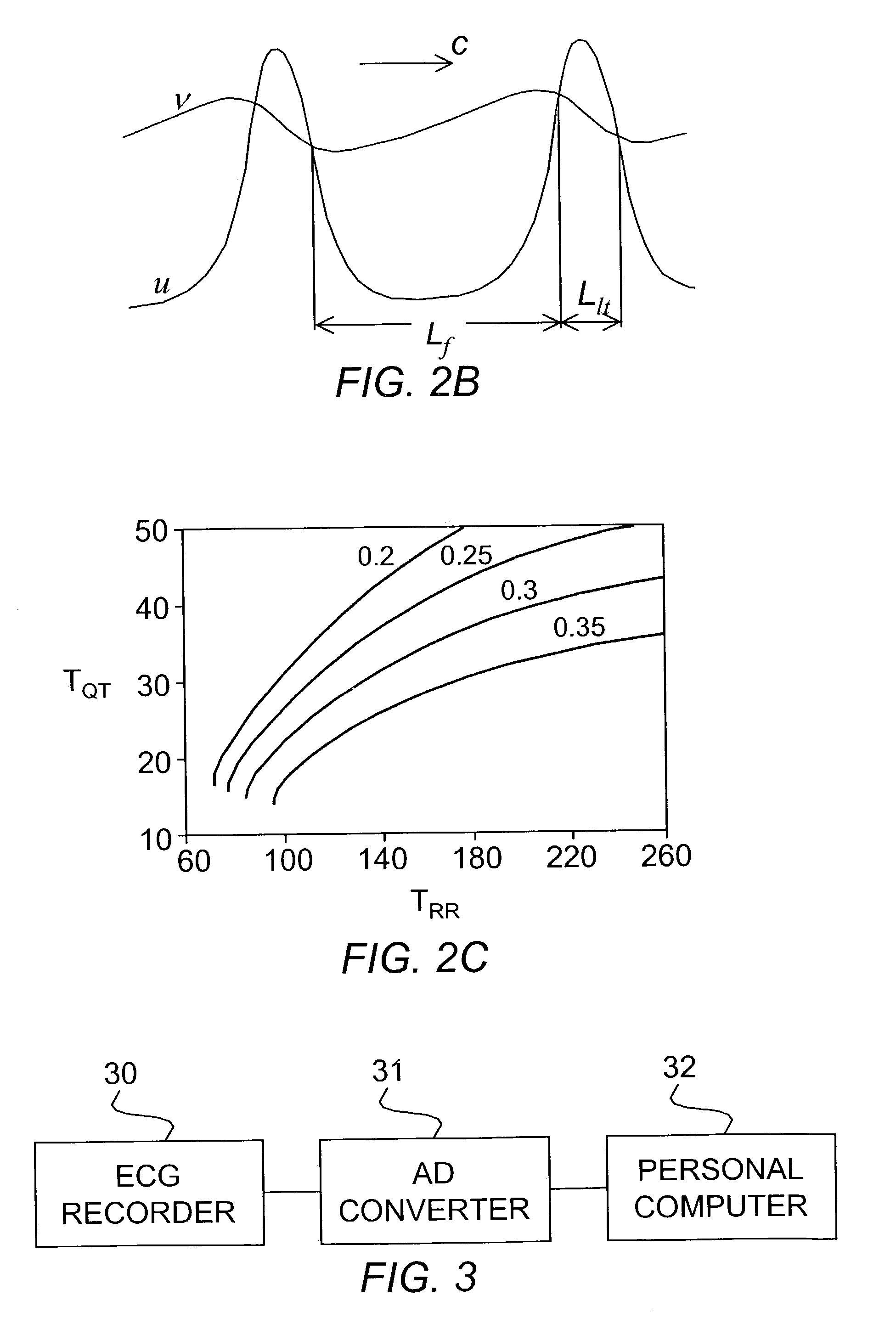Method and system for evaluating cardiac ischemia with an exercise protocol
a cardiac ischemia and exercise protocol technology, applied in the field of non-invasive high-resolution diagnostics of cardiac ischemia, can solve the problems of less accurate predictors of cardiac electrical instability, qt interval dispersion is linked with risk of arrhythmia, and type of hysteresis phenomenon is not useful in assessing cardiac muscle health or in assessing cardiac ischemia, and achieves high peak heart rate and is easy to d
- Summary
- Abstract
- Description
- Claims
- Application Information
AI Technical Summary
Benefits of technology
Problems solved by technology
Method used
Image
Examples
example 1
Testing Apparatus
[0111]A testing apparatus consistent with FIG. 3 was assembled. The electrocardiograms are recorded by an RZ152PM12 Digital ECG Holter Recorder (ROZINN ELECTRONICS, INC.; 71-22 Myrtle Av., Glendale, N.Y., USA 11385-7254), via 12 electrical leads with Lead-Lok Holter / Stress Test Electrodes LL510 (LEAD-LOK, INC.; 500 Airport Way, P.O. Box L, Sandpoint, Ind., USA 83864) placed on a subject's body in accordance with the manufacturer's instructions. Digital ECG data are transferred to a personal computer (Dell Dimension XPS T500 MHz / Windows 98) using a 40 MB flash card (RZFC40) with a PC 700 flash card reader, both from Rozinn Electronics, Inc. Holter for Windows (4.0.25) waveform analysis software is installed in the computer, which is used to process data by a standard computer based waveform analyzer software. Composite dispersion-restitution curves and an indicium that provides a quantitative characteristic of the extent of cardiac ischemia are then calculated manual...
examples 2 – 6
EXAMPLES 2–6
Human Hysteresis Curve Studies
[0113]These examples illustrate quasi-stationary ischemia-induced QT-RR interval hystereses in a variety of different human subjects. These data demonstrate a high sensitivity and the high resolution of the method.
examples 2 – 3
EXAMPLES 2–3
Hysteresis Curves in Healthy Male Subjects of Different Ages
[0114]These examples were carried out on two male subjects with an apparatus and procedure as described in Example 1 above. Referring to FIG. 5, one can readily see a significant difference in areas of hystereses between two generally healthy male subjects of different ages. These subjects (23 and 47 years old) exercised on a treadmill according to a quasi-stationary 30-minute protocol with gradually increasing and gradually decreasing exercise load. Here squares and circles (thick line) indicate a hysteresis loop for the 23 year old subject, and diamonds and triangles (thin line) correspond to a larger loop for the 47 year old subject. Fitting curves are obtained using the third-order polynomial functions. A beat sampling rate with which a waveform analyzer determines QT and RR intervals is equal to one sample per minute. Neither of the subjects had a conventional ischemia-induced depression of the ECG-ST segme...
PUM
 Login to View More
Login to View More Abstract
Description
Claims
Application Information
 Login to View More
Login to View More - R&D
- Intellectual Property
- Life Sciences
- Materials
- Tech Scout
- Unparalleled Data Quality
- Higher Quality Content
- 60% Fewer Hallucinations
Browse by: Latest US Patents, China's latest patents, Technical Efficacy Thesaurus, Application Domain, Technology Topic, Popular Technical Reports.
© 2025 PatSnap. All rights reserved.Legal|Privacy policy|Modern Slavery Act Transparency Statement|Sitemap|About US| Contact US: help@patsnap.com



